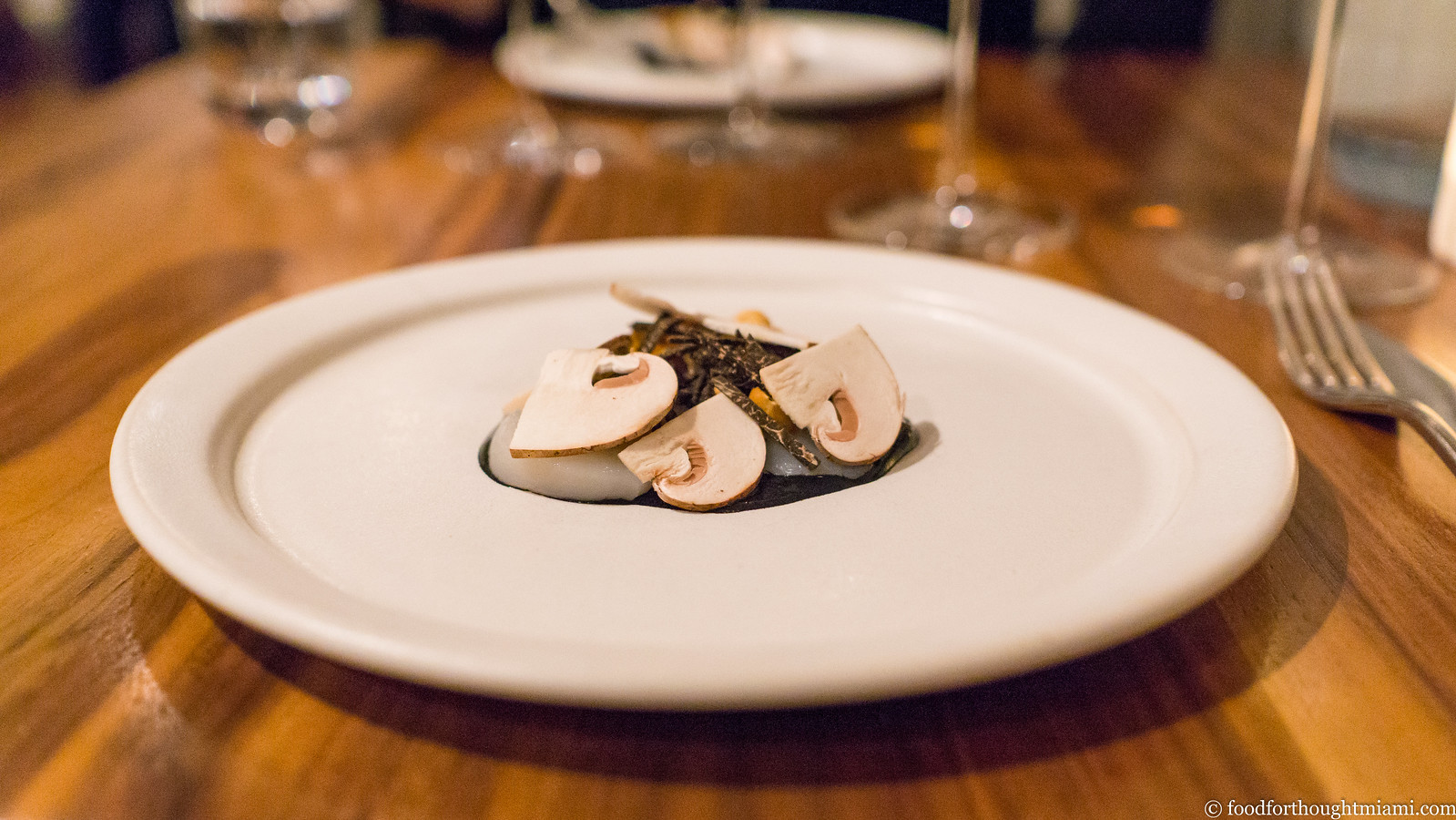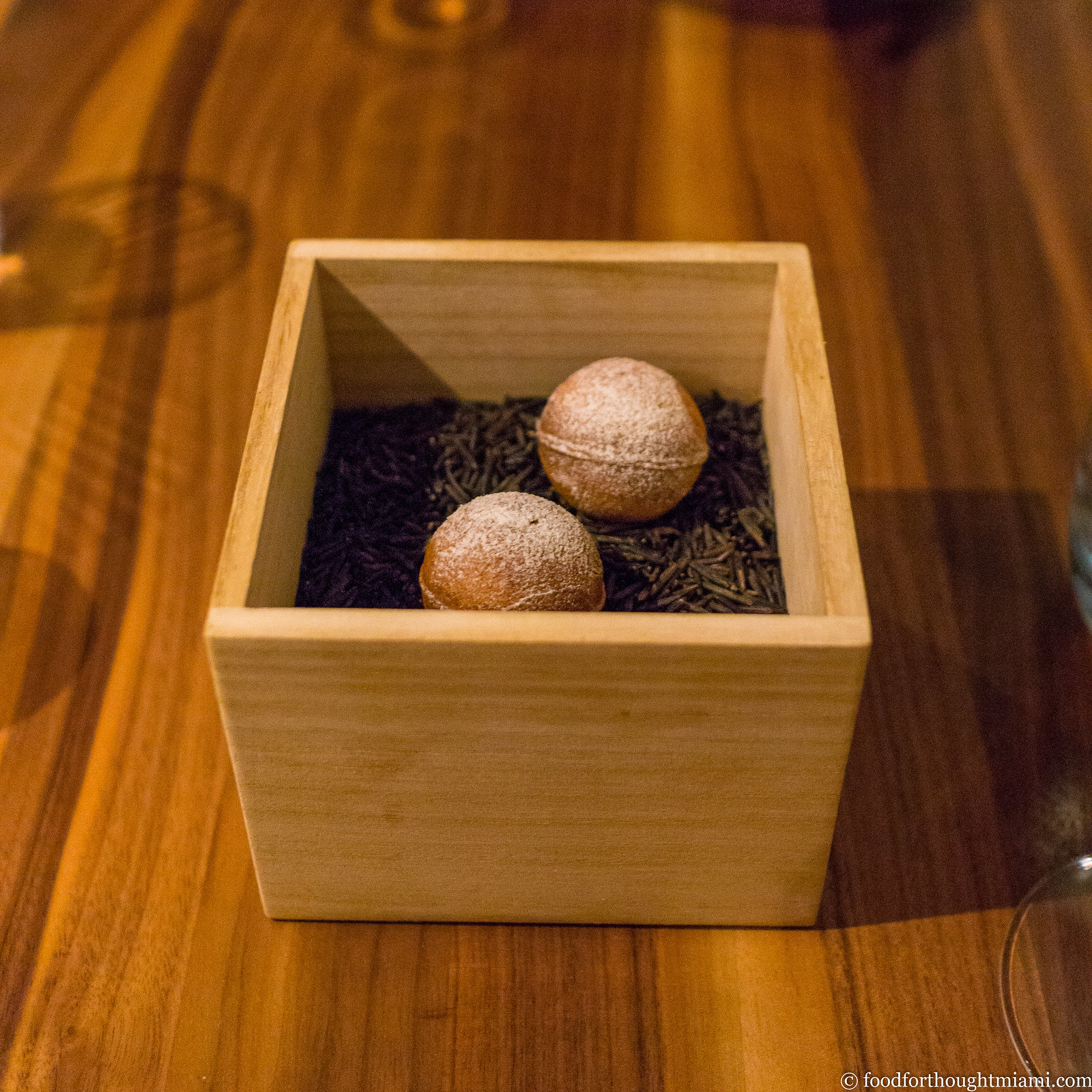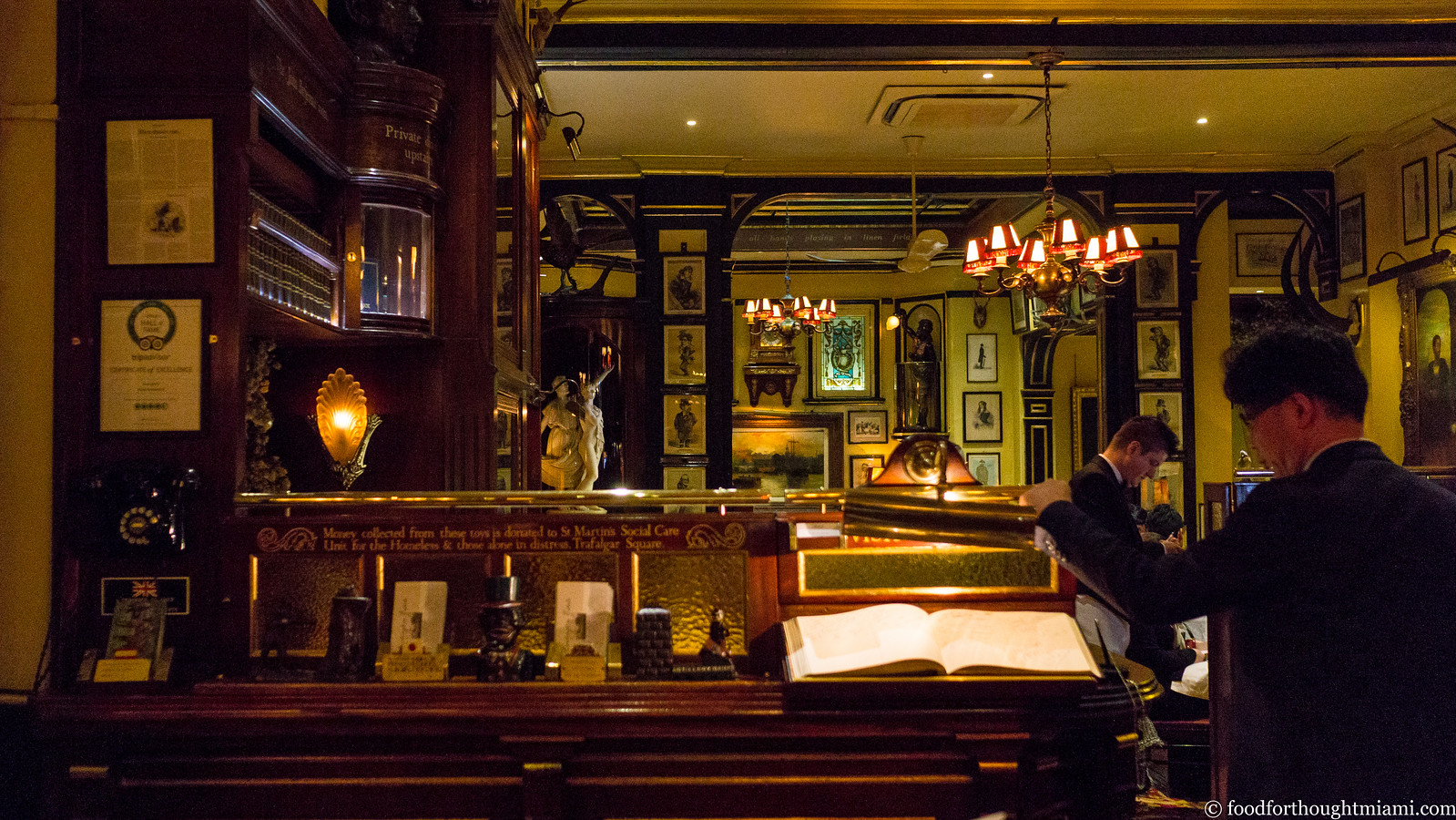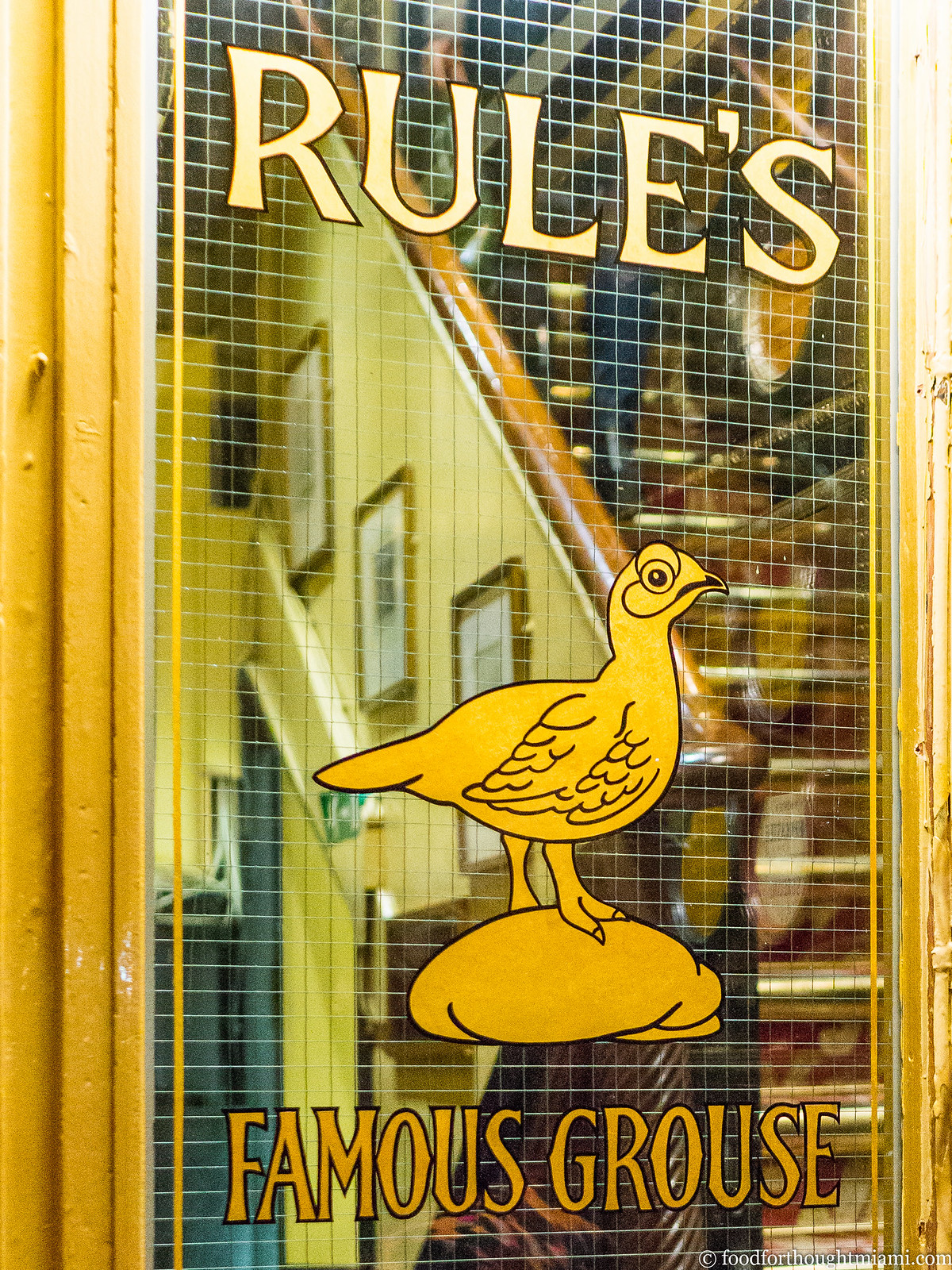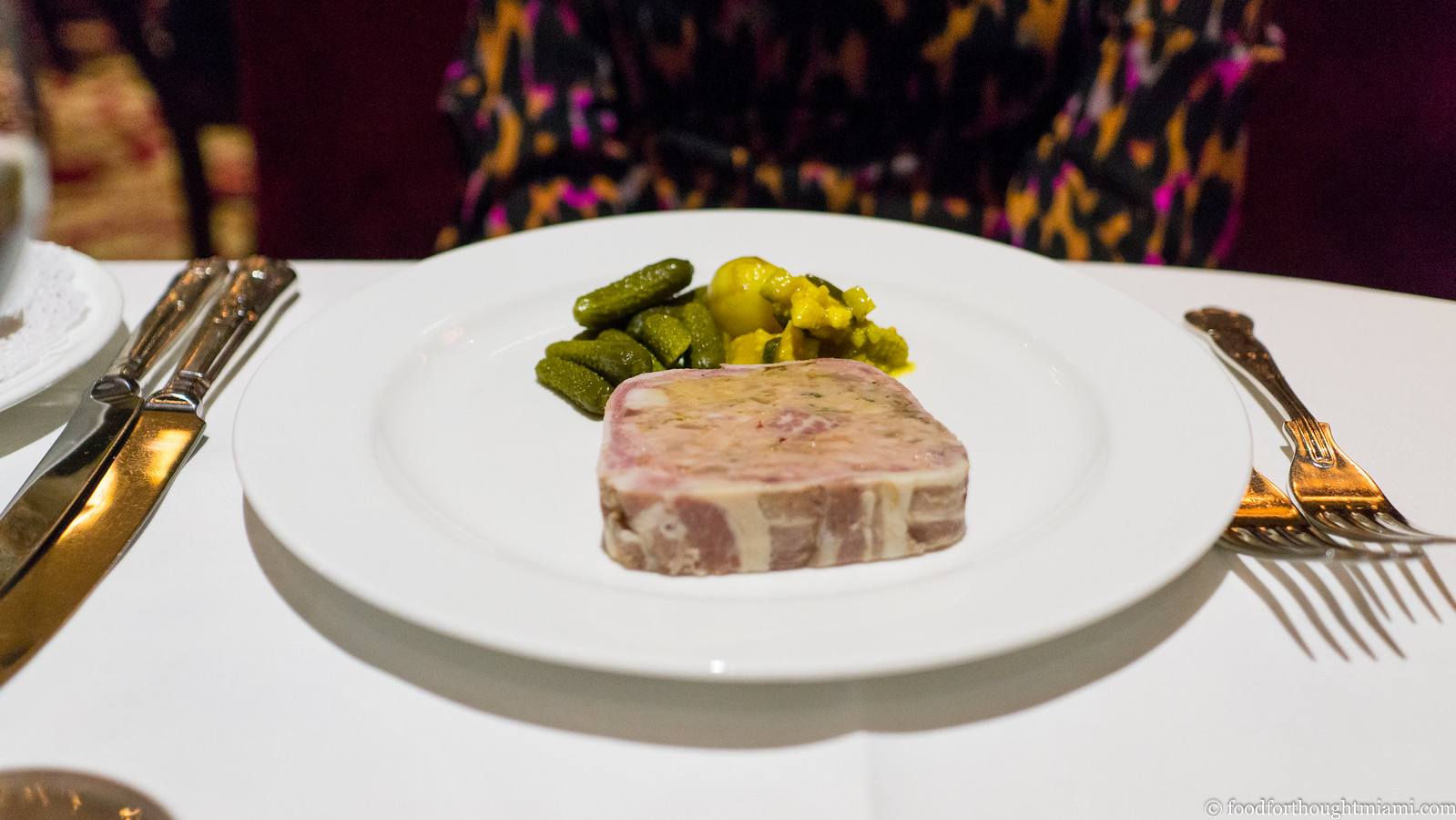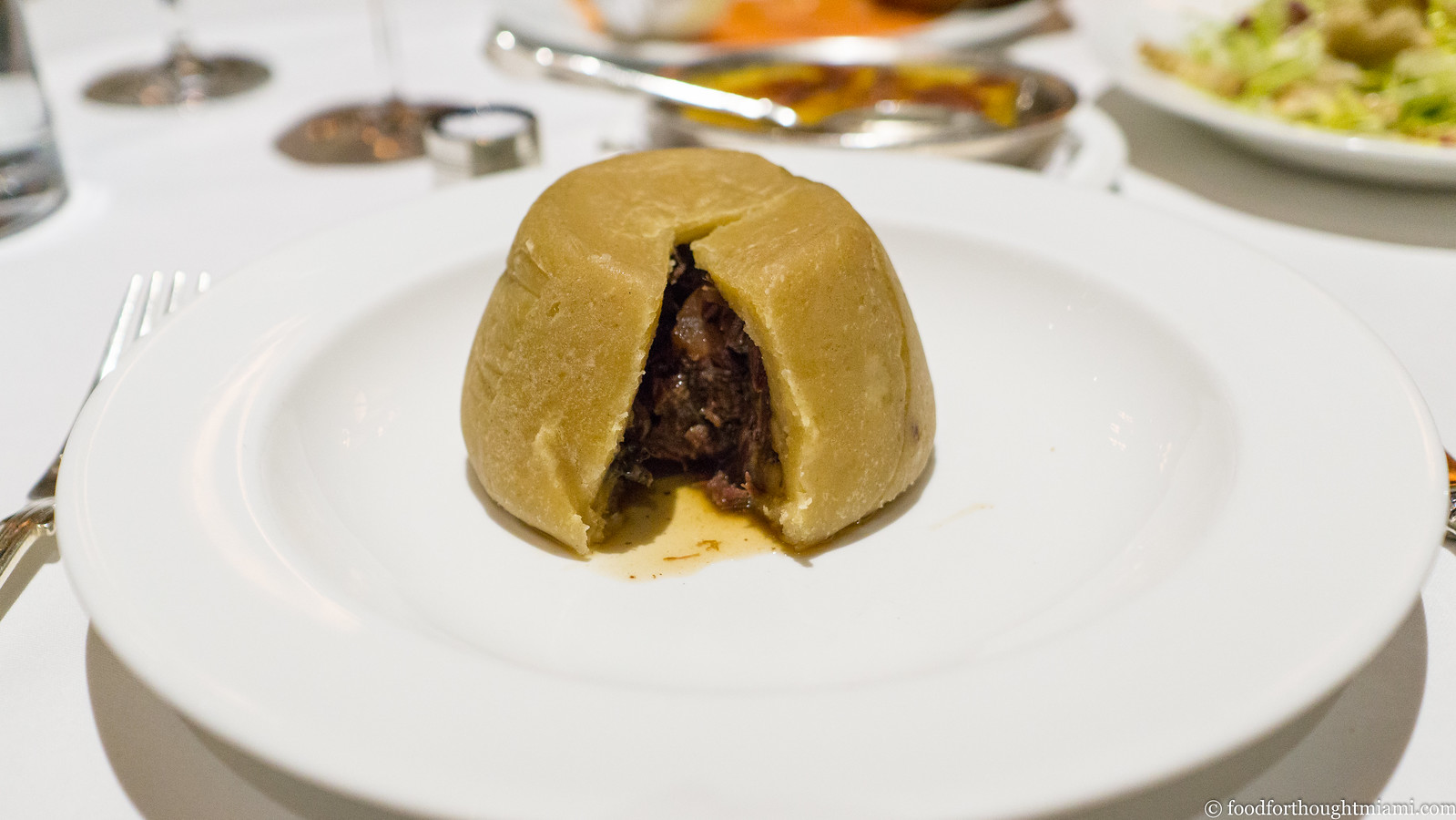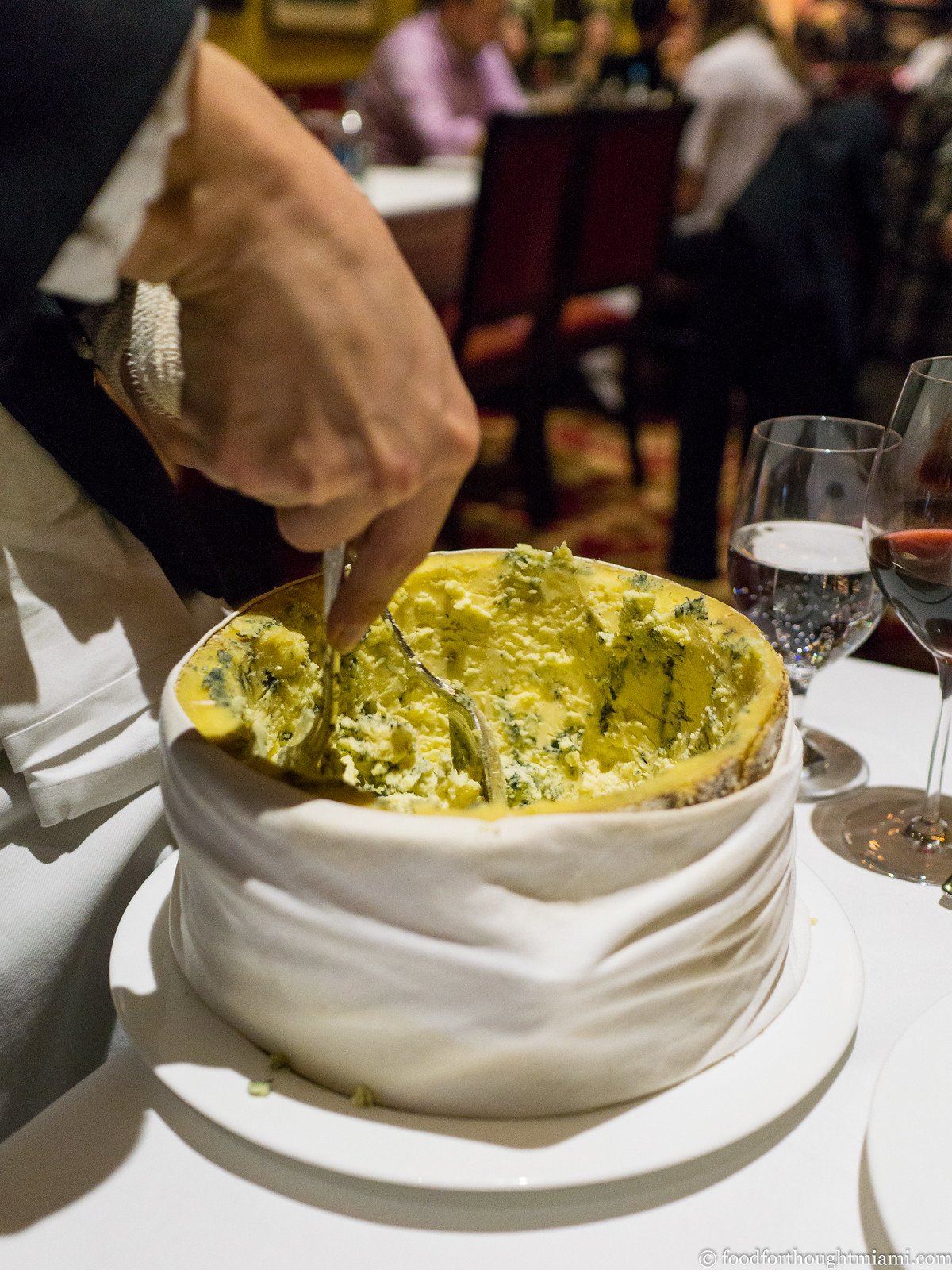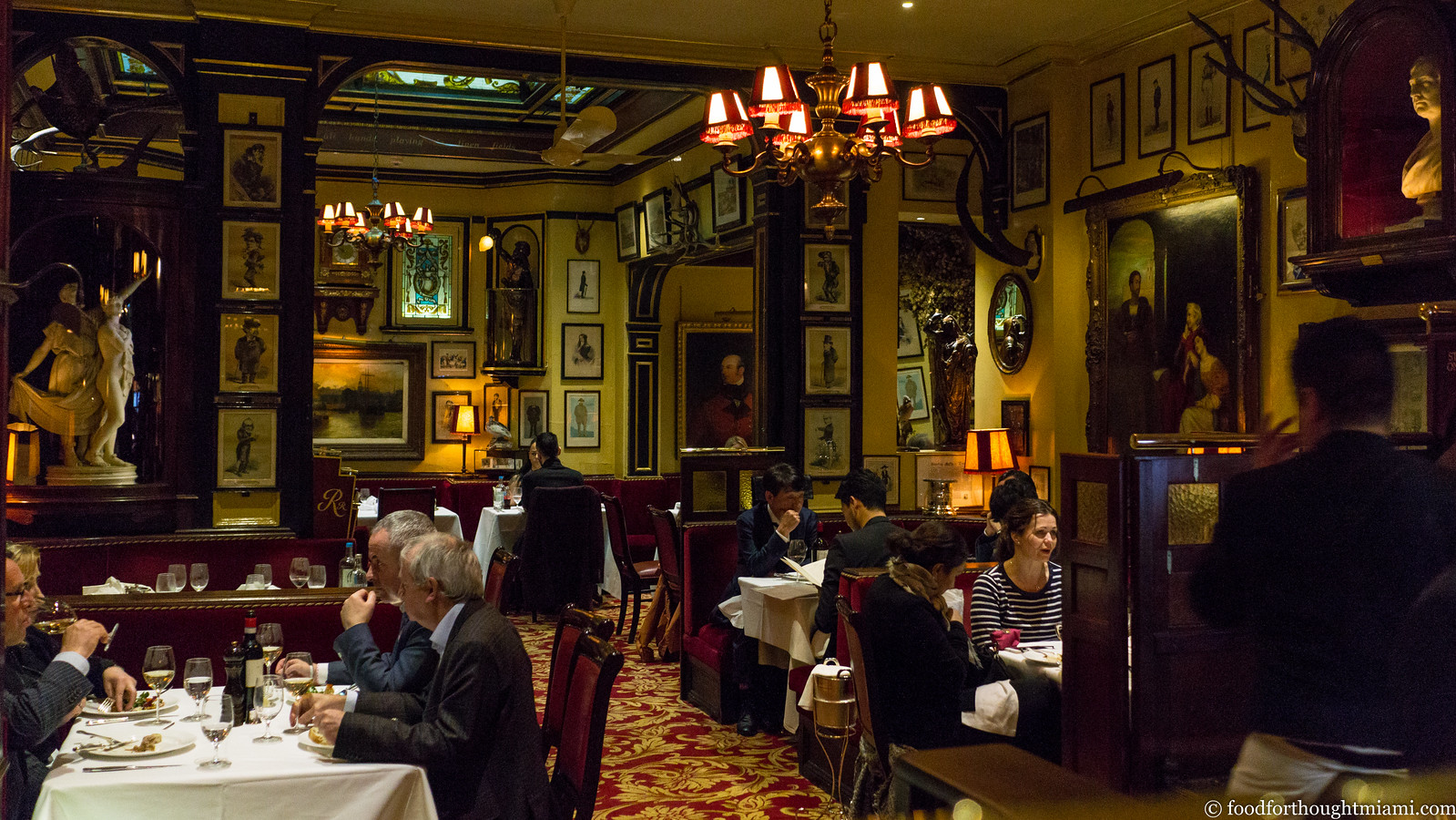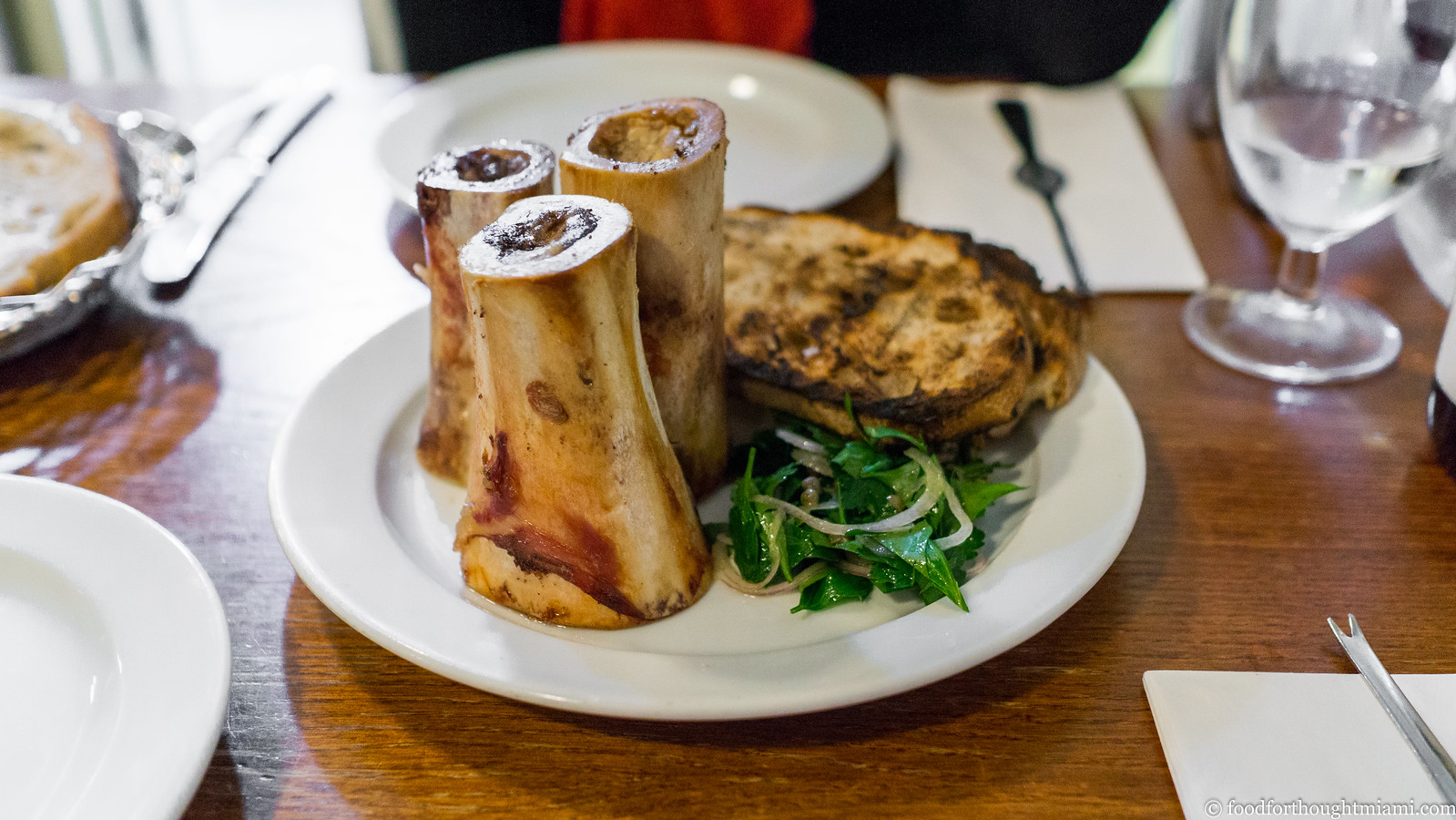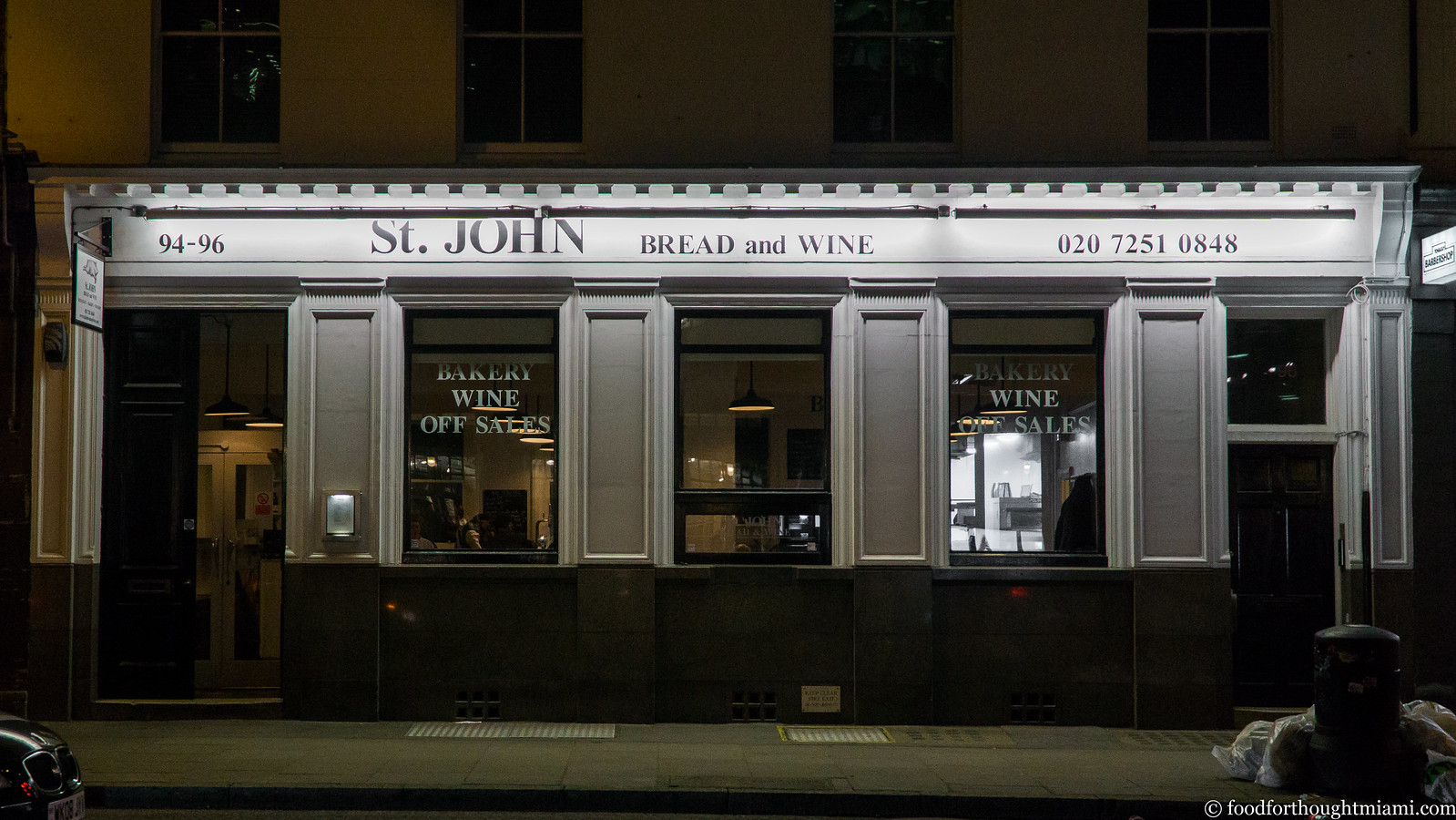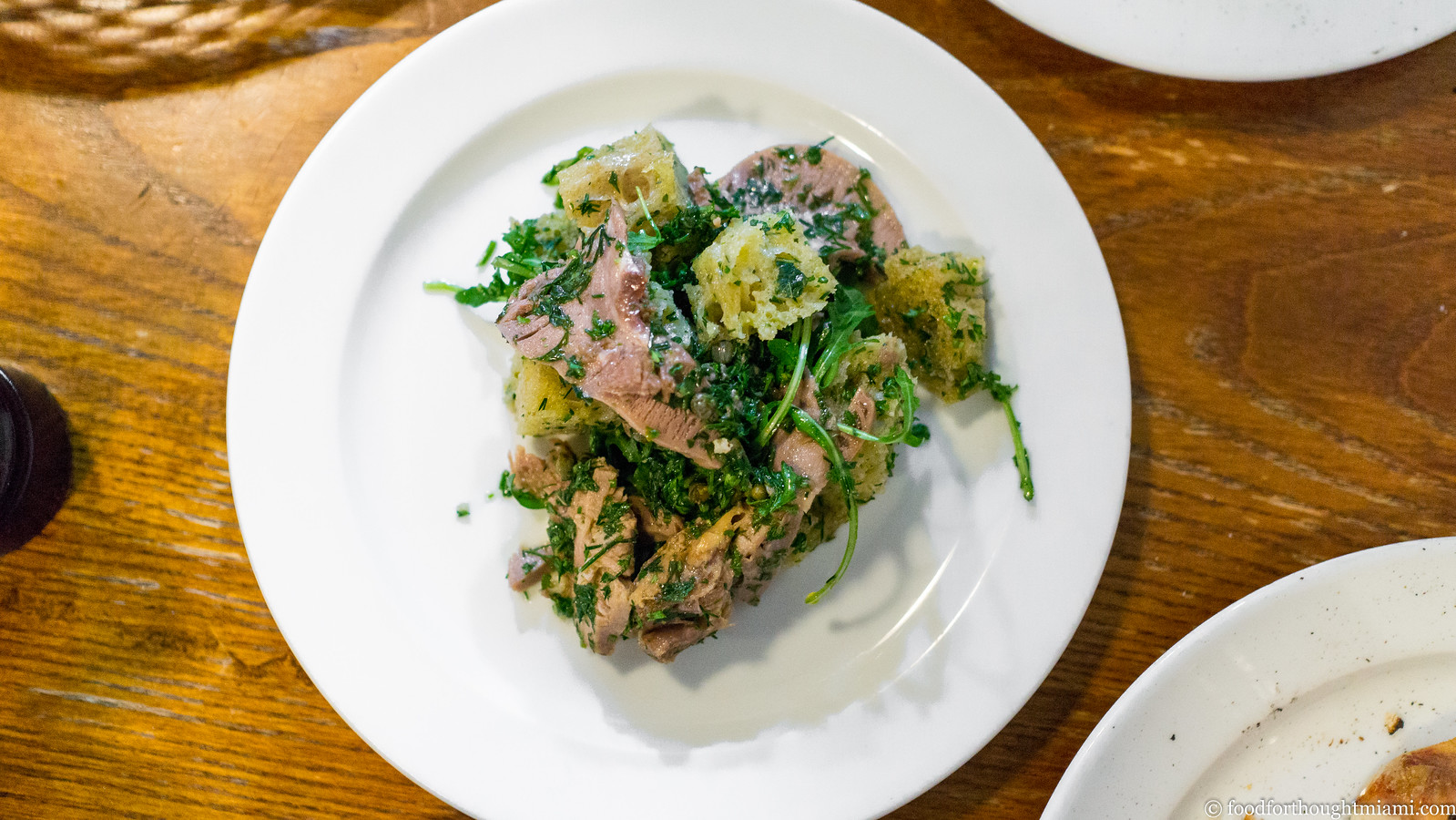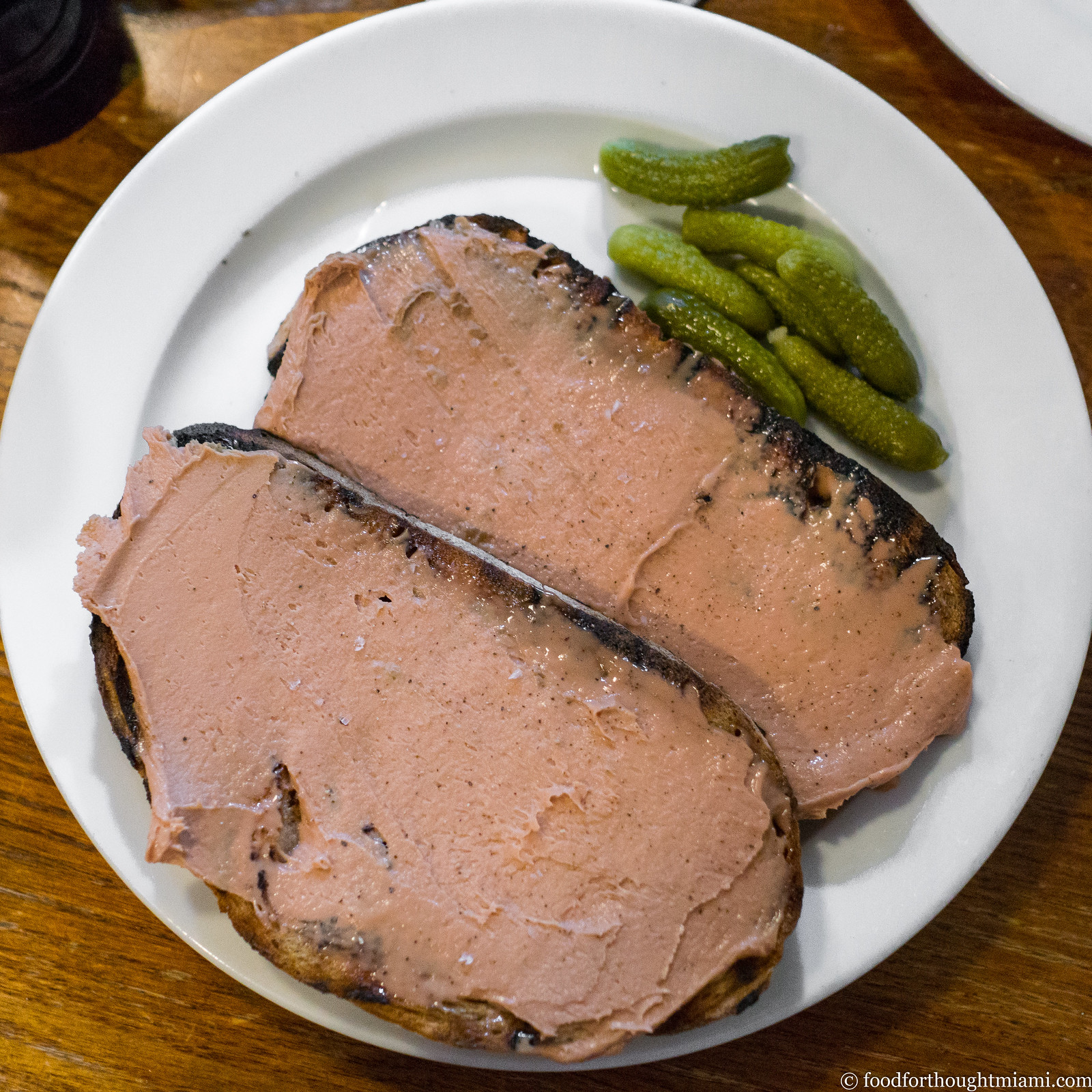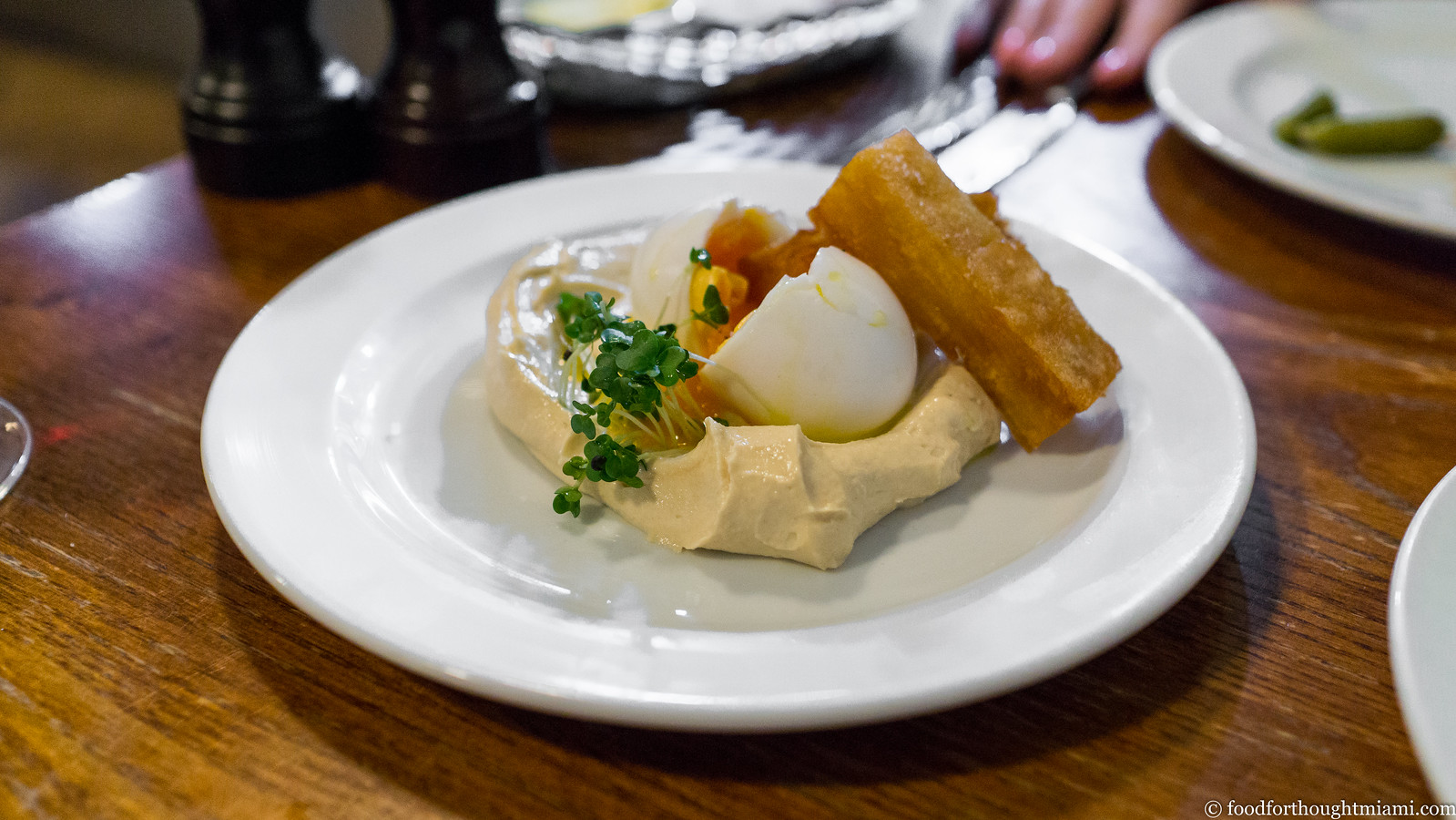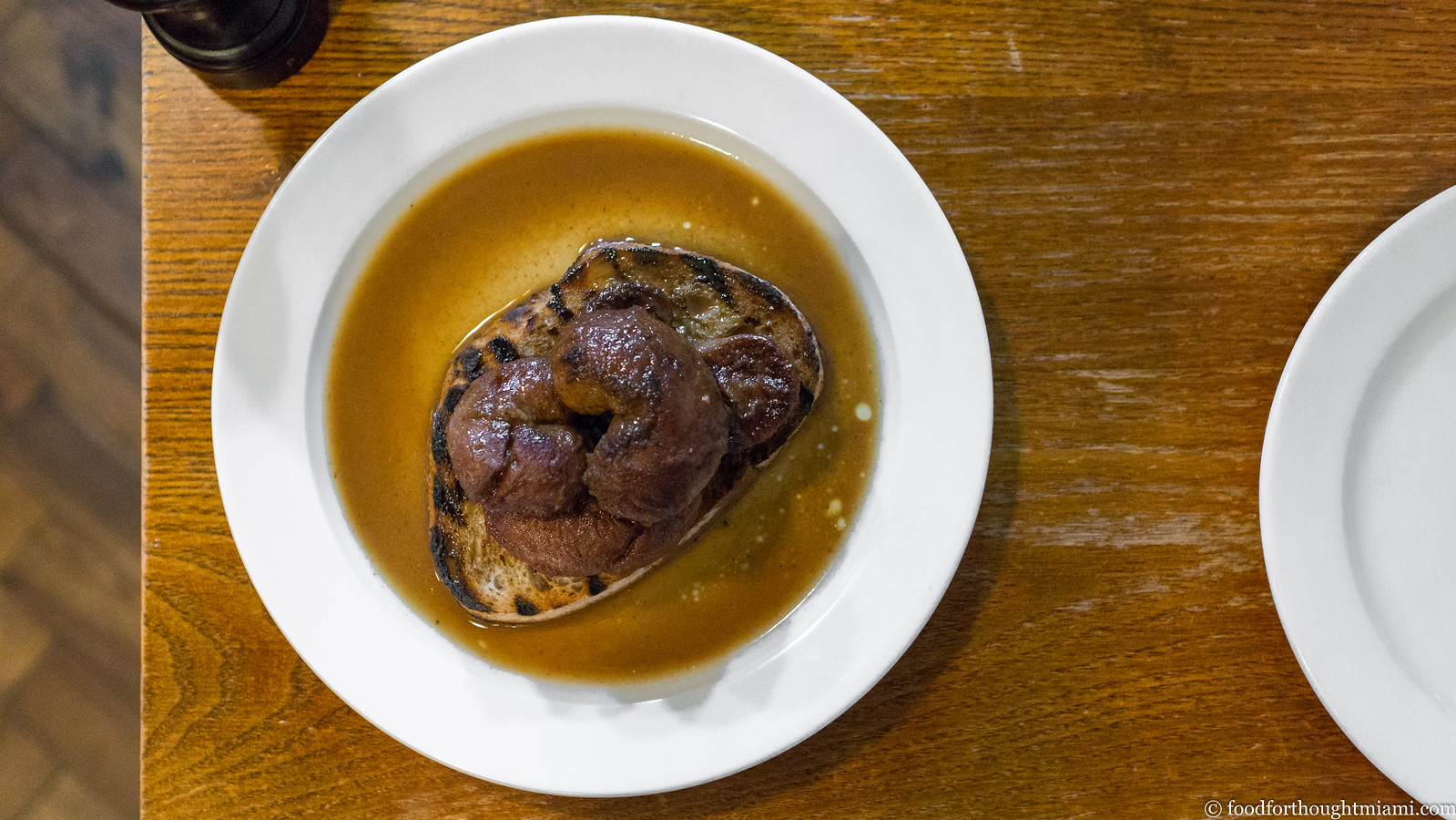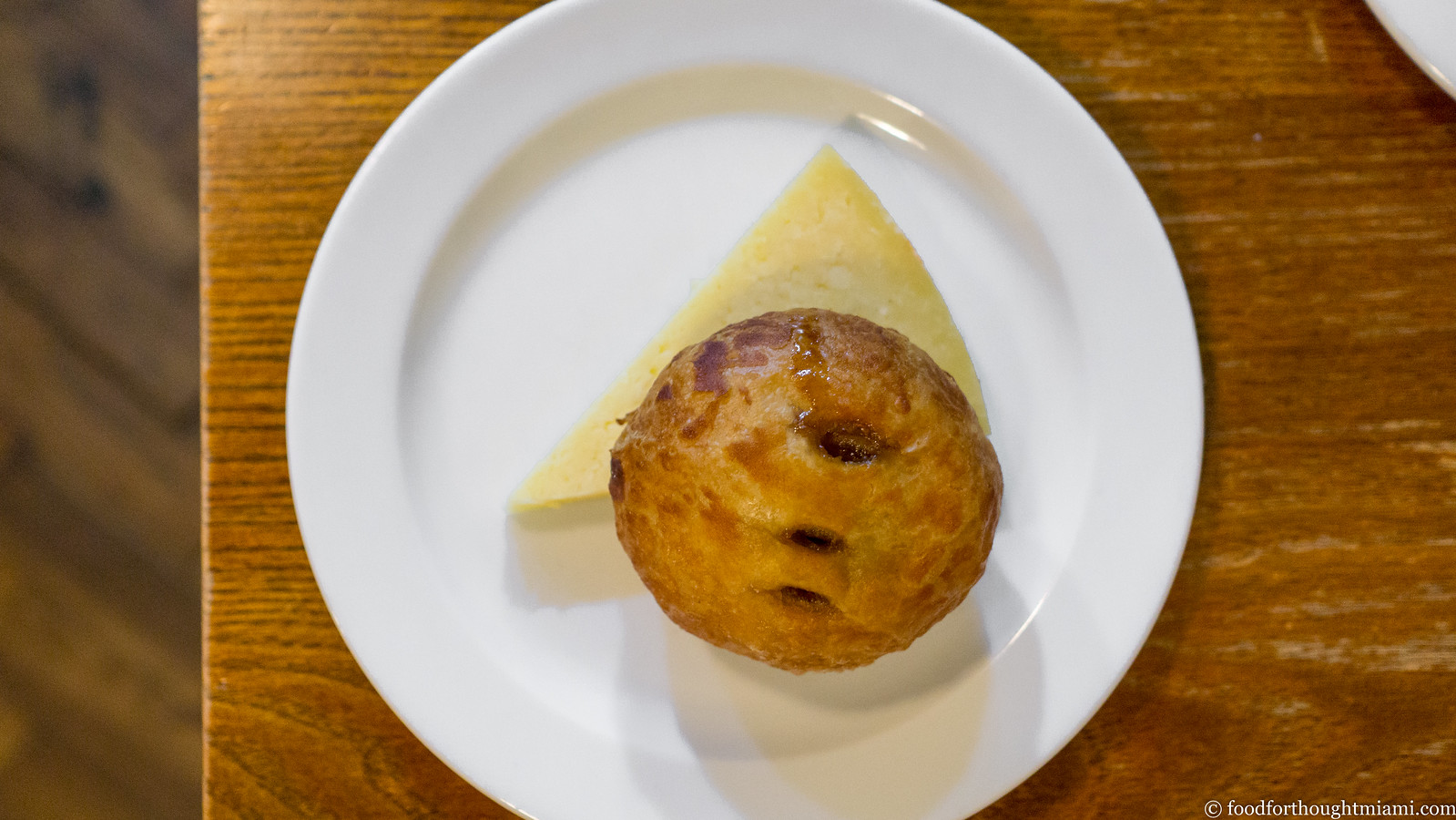Showing posts with label London. Show all posts
Showing posts with label London. Show all posts
Sunday, June 11, 2017
The Clove Club | London
We only had three nights in London on this last trip, our first visit in a decade, but I think our dinner choices – Rules, St. John, and on our final night, The Clove Club – successfully captured a meaningful cross-section. Each of these places might seem quite different on the surface – the red velvet banquettes and gold-framed portraits of Rules are entirely unlike the abbatoir-like black-and-white starkness of St. John, which is equally unlike the cool modernism of the Clove Club. Though the spare, contemporary plates at Clove Club might appear to be from a different world than the straightforward, traditional dishes at Rules, there's a thread which runs through them: a deeply ingrained dedication to British ingredients.
The Clove Club, which started as a living room supper club run by chef Isaac McHale, has made itself a home in a 150-year old building that used to be the Shoreditch Town Hall. Now, you enter into a smart, cozy bar – where, it should be noted, several smaller dishes from the tasting menu are available on an a la carte basis, something I'll be keeping in mind the next time in town. You pass from the bar into an equally smart dining room, the centerpiece of which is a shiny open kitchen. Sometimes these layouts feel like a stage, where the diners are meant to gaze in rapt wonder upon the chefs. This one feels more like the loft of your tasteful London friend, the one with a fetish for blue subway tile and 1960's Scandinavian furniture. It's elegant, in an understated way; but more important, it's comfortable – it still feels like it could be a living room supper club, though in a pretty fancy living room.
Dinner can be either a five-course affair, currently priced at £75, or a more elaborate tasting menu for £110, which was the route we chose.
(You can see all my pictures in this The Clove Club - London flickr set; these are from a meal in February 2017).
The meal starts with a series of snacks, the first of which is something of a signature dish: buttermilk-marinated fried chicken, dusted with pine salt, and presented nestled in a woven basket filled with pine branches. It is like the platonic ideal of a chicken nugget. A glass of Gusbourne Blanc de Blanc accompanies the snacks, and I'm pleasantly surprised to discover that very respectable sparkling wine is coming from this side of the English Channel, in West Sussex.
McHale turns his sights to his native Scotland next with a warm haggis bun, the funk of offal tempered by warm spices and a dusting of vinegar powder. Local ingredients take a Japanese turn with a rectangular laver (seaweed)[1] crisp that serves as the vehicle for a rich, oily mackerel tartare.
(continued ...)
Monday, April 3, 2017
Rules Restaurant | London
Fergus Henderson may have helped convince the world that British food was worthy of attention with his restaurant, St. John (some more thoughts on St. John here). But at Rules, they were never in any doubt.
Rules bills itself as the oldest restaurant in London. Over the past two centuries, it's been owned by only three families: Thomas Rule opened it in 1798; just before World War I, one of his descendants decided to move to France, and arranged a swap with a Brit running a restaurant in Paris named Tom Bell; and then in 1984, Bell's daughter sold the restaurant to its current owner John Mayhew.
The dining room, with its red velvet-wrapped, gold-piped banquettes, polished wood dividers, oil portraits and old cartoons on the walls,[1] the occasional marble bust here and there, looks every bit the part. If not for the bona fides of its history, the stereotypically posh decorations would seem almost laughable. I adore the place.
We first came here on a family trip to London more than ten years ago. Our daughter was about six years old at the time; she did not adjust well to the jet lag, and within an hour she was sliding under the table.[2] This time around, I was the one who wanted to throw a fit when I learned that we had just missed game season. Through the present owner's inheritance of the Lartington Estate in northern England and relationships with local game dealers, Rules sometimes has a glorious assortment of wild things on the menu – its "famous grouse," but also woodcock, pheasant, partridge, wild duck, hare and more. Alas, not on this visit.
(You can see all my pictures in this Rules - London flickr set).
Before getting to the food, I highly recommend a visit upstairs to the Edward VII Room, a/k/a the cocktail bar, a snug spot with a carved wooden bar counter, a few tables and couches, and a fine assortment of hunting murals and trophies adorning the walls. The bar program is run by Mike Cook, and his crew can handily make the classics like a pitch-perfect Negroni. But they also have their own creations, like the intensely aromatic Lucia Sciarra, named after a character from the last James Bond film, Spectre.[3]
Once I'd recovered from having missed game season (my recovery aided by a pleasant cocktail), I focused my attention on the menu, which also helped ease my disappointment. You get the sense it could have been written a hundred years ago. Chef David Stafford shows occasional flashes of whimsy, like a duck leg "pastilla" paired with a spiced duck breast, but for the most part he proudly and lovingly cooks traditional British dishes. And this he does exceedingly well.
So there's potted shrimps, a mound of tiny, tender brown crustaceans caught in Morecambe Bay, preserved in butter and spices in the way it's been done for hundreds of years. There's Middlewhite pork terrine, which makes use of a rare heritage breed of pig that originated in Yorkshire, served simply with picallili and cornichons. The shrimp taste of shrimp, the pork tastes of pork, and I couldn't possibly be happier.
For her main, Mrs. F chooses the Uig Lodge smoked salmon, sourced from a smokery on the far northern reaches of the Outer Hebrides. The salmon is served with fat slabs of brown bread and offered either with or without scrambled eggs, but surely this is a rhetorical question? The salt and smoke on the fish whisper rather than shout, and its texture is all silk, matched by the soft, creamy eggs.
For me, a real taste of tradition: a steamed suet pudding. It arrives at the table completely unadorned, looking like a doorstop from a giant's castle. Cut it open, and beneath a layer of dense, chewy suet pastry, a stew of venison, red wine and chestnut mushrooms issues forth. There's nothing light or delicate here, but it has a brawny beauty all its own; it's rich, and hearty, and sticky, and satisfying, and I love that such things still exist in this world.
Along with our mains, we have some bronze-crested, buttery-interiored potatoes Anna, as well as a perky salad with sprightly pale sprigs of frisée, crispy bacon lardons, toasty croutons and a bracing shallot vinaigrette.[4]
We always enjoy ending a meal with some good cheeses, but Mrs. F is not so much a fan of the blue-veined varieties. So I'm pleased to hear that the cheese plate, which features a few English cheeses served with biscuits and a sweet shallot jam, can be supplemented with a portion of the Cropwell Bishop Stilton. The entire wheel is brought to the table, from which they will scoop the paste onto your plate until you say "enough!" Made by a third-generation creamery in Nottingham, it's more creamy than crumbly, tangy enough to balance the fat but not so much to blow out your sinuses, and just lovely stuff.
There's a certain danger in a place like this getting weighed down by its historical baggage, but Rules manages to avoid that. It doesn't feel, or taste, like a museum piece, but rather like a living, breathing restaurant that just happens to be from another century. But good food is timeless; I hope Rules remains so as well.
Rules Restaurant
35 Maiden Lane, Covent Garden, London, England
+44 0 20 7836 5314
[1] There's also a massive mural on one wall of a stern-faced Margaret Thatcher looking as if she belongs on the prow of a ship.
[2] She didn't actively misbehave. She just sort of ran out of steam, started to fade and get a little teary-eyed, and quietly mewled "I'm broken." We still say this when it gets a little too late in the evening for any of us.
[3] The concoction includes Star of Bombay Gin, Lillet Blanc, Benedictine, Gammel Dansk Bitter Dram, and a lemon twist. You can see Cook making one here. Delicious. You can also see Rules make a cameo appearance in a scene from Spectre which was shot at the restaurant. Rules has made many other literary appearances, including in novels by Evelyn Waugh and Graham Greene, among others. Speaking of things literary, I think it's just wonderful that the restaurant proudly republishes an absolutely scathing review by Kingsley Amis entitled "Where Disaster Rules," written sometime in the 1970's, on their website ("There are cheaper eating-places than Rules where the atmosphere and service are so pleasant that they drive out other impressions. Far from the case here; but then I find it hard to imagine an establishment Elysian enough to dispel the memory of two of the most disgusting full-dress meals I have ever tried to eat in my life.")
[4] We also drink a really nice wine, the 2010 Rossignol-Fevrier "Robardelle," a premier cru vineyard in Volnay from a producer which I don't think gets distributed in the U.S. Happily, the wine list at Rules mostly shares my predilections for Burgundies, Rhones, and sub-$100 wines.
[2] She didn't actively misbehave. She just sort of ran out of steam, started to fade and get a little teary-eyed, and quietly mewled "I'm broken." We still say this when it gets a little too late in the evening for any of us.
[3] The concoction includes Star of Bombay Gin, Lillet Blanc, Benedictine, Gammel Dansk Bitter Dram, and a lemon twist. You can see Cook making one here. Delicious. You can also see Rules make a cameo appearance in a scene from Spectre which was shot at the restaurant. Rules has made many other literary appearances, including in novels by Evelyn Waugh and Graham Greene, among others. Speaking of things literary, I think it's just wonderful that the restaurant proudly republishes an absolutely scathing review by Kingsley Amis entitled "Where Disaster Rules," written sometime in the 1970's, on their website ("There are cheaper eating-places than Rules where the atmosphere and service are so pleasant that they drive out other impressions. Far from the case here; but then I find it hard to imagine an establishment Elysian enough to dispel the memory of two of the most disgusting full-dress meals I have ever tried to eat in my life.")
[4] We also drink a really nice wine, the 2010 Rossignol-Fevrier "Robardelle," a premier cru vineyard in Volnay from a producer which I don't think gets distributed in the U.S. Happily, the wine list at Rules mostly shares my predilections for Burgundies, Rhones, and sub-$100 wines.
Saturday, April 1, 2017
St. John Bread and Wine | London
Until recently, British food has been saddled with a terrible reputation. I'm reminded of the old George Carlin joke about heaven and hell:
"In heaven, the Italians are the lovers, the French cook the food, the Swiss run the hotels, the Germans are the mechanics, and the English are the police. In hell, the Swiss are the lovers, the English cook the food, the French run the hotels, the Italians are the mechanics, and the Germans are the police."
That reputation, I've always thought, has been undeserved. Even thirty years ago, when I spent a summer in Oxford "studying," I ate very well. Ploughman's lunches with good cheese and bread, rich steak and kidney pies, crisp, steamy fish and chips wrapped in newspaper, fiery Indian and Jamaican food – what's not to like?
Over the past couple decades, general sentiment seems to have shifted, and now London is regarded as one of the world's top dining destinations. Partly that's been driven by international attention for this very moneyed, lucrative market; one of the odd things about planning a recent brief visit to both London and Paris (three days in each) was realizing that many of Paris' top chefs have opened outlets in London so that, in Epcot-like fashion, you could arguably taste some of the best of Paris without ever crossing the Channel. But even more so, it's been driven by English chefs' internal reflection: recognizing, and promoting, great British cookery.
One of the individuals who was formative in that shift was Fergus Henderson. His restaurant, St. John, which opened in 1995, and his cookbook, first published in 1999 as "Nose to Tail Eating: A Kind of British Cooking" (released in the U.S. in 2004 as "The Whole Beast: Nose to Tail Eating") are mostly recognized for being a manifesto on the joys of offal and whole-animal utilization. They are most definitely that, but they also are an ode to traditional British dishes – things like cock-a-leekie soup and bath chaps and game birds and Eccles cakes – and the value of native ingredients.
I'd never been. So it was the first dinner reservation I made for this trip.
We actually booked at St. John Bread and Wine, a sibling to the original St. John around the corner from Smithfield Market. Bread and Wine, originally intended to be a bakery and wine shop (thus the name), makes its home across from the Spitalfields Market,[1] and is slightly more casual than the mothership. More of the menu is offered as small plates, and they ascribe to the "dishes come out as they're ready and are meant for sharing" school of service. Since this gave us an opportunity to sample broadly, it was perfect.
(You can see all my pictures in this St. John Bread and Wine flickr set).
Of course, you have to start with the roasted marrow bones – Henderson's most famous dish, one that has been lovingly duplicated countless times in countless restaurants around the world, one that Anthony Bourdain declared his "always and forever choice" for his Death Row meal. The formula is now well-known: roasted femur bones; toasted bread; a pile of parsley salad; a mound of coarse sea salt. Scoop the oozy marrow from the bone, spread on to the toast, dress with a sprinkle of salt and a pinch of the salad, and enjoy. I've had it dozens of times, but never until now the original. And yes, it's the best: the marrow at the magic borderline between solid and liquid, the acid and salt and herbaceous bite of the salad right on the edge of too aggressive without crossing the line, with just the right punch of caper and shallot. I can't say it better than Fergus himself:
"Do you recall eating Raisin Bran for breakfast? The raisin-to-bran-flake ratio was always a huge anxiety, to a point, sometimes, that one was tempted to add extra raisins, which inevitably resulted in too many raisins, and one lost that pleasure of discovering the occasional sweet chewiness in contrast to the branny crunch. When administering such things as capers, it is very good to remember Raisin Bran."Though not as famous, the other dishes we tried exhibited the same winning combination of good, honest ingredients, intense, robust flavors, and attentive execution.
I loved these tender curls of lamb's tongues wrapped around cubes of bread, all enrobed in a bright, verdant green sauce, like a meaty panzanella salad. Picking at a smoked fish nearly always brings me joy, and the minimalist approach here – the unadorned back end of a smoked mackerel, served simply on a plate with a potato salad given a sinus-clearing blast of mustard dressing – is my kind of happy meal.
Another testament to the joy of simplicity: slabs of toast spackled with a rich, intense mousse of duck livers and foie gras. It's just nearly too much; then you take a bite of cornichon, your appetite is restored, and you go back for more. The smoked cod's roe is like salt, smoke and sea wrapped in silk, but maybe the best part are the crispy batons fashioned from thin layers of potato perched on top. We finished with deviled kidneys: chewy, soft, springy, and ferrous, served over toast drenched with cooking juices spiked with mustard powder and Worcestershire sauce.[2]
We ordered dessert whilst draining the last of a bottle of Beaujolais, starting first with St. John's version of a classic – Eccles cake. There are whole families of traditional British desserts of which I know nothing, this being a good example. Every time I'd peruse the online menu at St. John I'd see it, and so of course I had to order it. The sweetness of the "cake" – a flaky pastry wrapped around a filling of sticky currants – is balanced by an accompanying slab of fresh, crumbly, sharp, faintly salty Lancashire cheese. Then a few minutes later, a batch of warm, airy madeleines, fresh from the oven. We trusted our server for something to drink with these, and our trust was rewarded with a glass of Pineau de Charentes.
Honestly, I wondered if St. John would live up to its nearly mythical reputation. Bourdain, in his foreword to the U.S. release of Nose to Tail, acknowledges, "My enthusiastic rant in my book A Cook's Tour made him sound like George Washington, Ho Chi Minh, Lord Nelson, Orson Welles, Pablo Picasso, and Abbie Hoffman – all rolled into one." And Henderson, both in interviews and on the page, evinces such unbridled enthusiasm, humble charm, and subtle wit that it's hard to imagine not liking his food. This is a man who can make curly parsley sound good![3]
But this was just a joyous meal: great ingredients; straightforward, bold, intense flavors; presented without any fanfare but prepared with subtle finesse. In my version of heaven, Fergus is welcome to cook the food.
St. John Bread and Wine
94-96 Commercial Street, London
020 7251 0848
[1] While Smithfield is still a functioning meat market, Spitalfields has been refurbished into a shopping mall.
[2] I rarely get to eat kidneys, and even more rarely get to eat properly prepared kidneys, but even so, their sort of crumbly, bouncy texture still puts them fairly low on my Favorite Offal list. Tripe, or livers, or sweetbreads, or hearts, would all rank before kidneys in my book.
[3] "As the swish, swish, swish of bunches of flat Italian parsley is to be heard in kitchens across the land, it seems time to celebrate the strength and character of the indigenous curly parsley. Its expression of chlorophyll and well being, strong flavor, slightly prickly texture, and its structural abilities enable such things as Parsley Sauce."
[2] I rarely get to eat kidneys, and even more rarely get to eat properly prepared kidneys, but even so, their sort of crumbly, bouncy texture still puts them fairly low on my Favorite Offal list. Tripe, or livers, or sweetbreads, or hearts, would all rank before kidneys in my book.
[3] "As the swish, swish, swish of bunches of flat Italian parsley is to be heard in kitchens across the land, it seems time to celebrate the strength and character of the indigenous curly parsley. Its expression of chlorophyll and well being, strong flavor, slightly prickly texture, and its structural abilities enable such things as Parsley Sauce."
Subscribe to:
Posts (Atom)

